Housing Summit inspires action on the East Side. What's next?
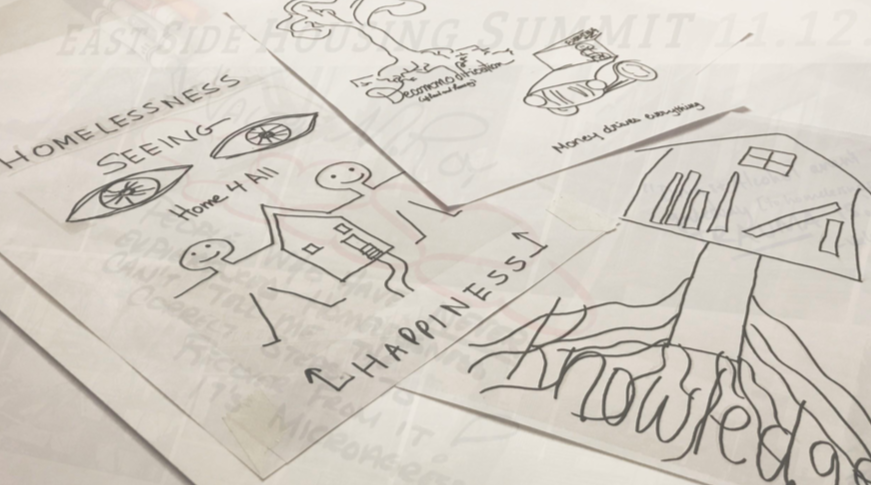
Seanne Thomas is owner of ABC Realty, a boutique, Black and female-owned real estate company on the East Side of Saint Paul. Back in March 2019, she and her team at ABC Realty decided to focus on closing the housing gap between White and Black Minnesotans - and to build awareness around the issue and identify collaborators working in this space.
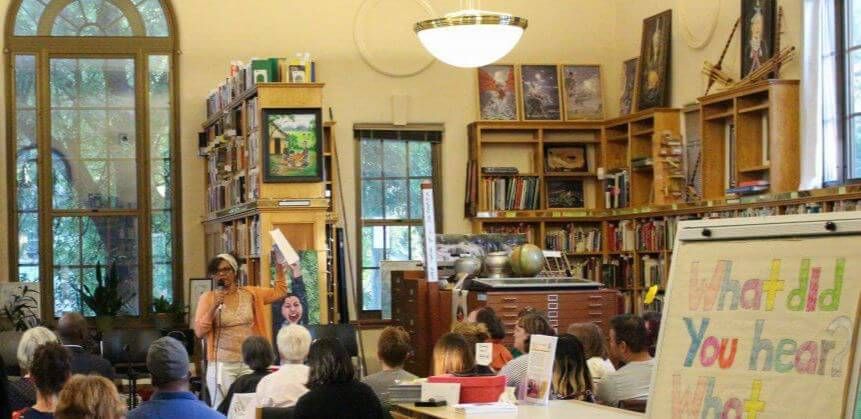
After a successful event in the spring, ABC Realty partnered with East Side Freedom Library (ESFL), TPT, MICAH, Dayton’s Bluff Neighborhood Housing Services, Cookie Cart, Minnesota Homeownership Center and Blue Green Alliance to create a summer-long film screening and conversation series focused on housing issues facing the East Side.
“In the Twin Cities, we have the biggest gap in homeownership in the nation. Seventy-seven percent White; 44 percent Black. That difference is called the 'gap.' So we created a forum at East Side Freedom Library," Thomas explained.
"People were candid. People were real. There were lots of people with a lot to say, with a story to tell about housing.”
At those summertime events, people showed up to tell their stories - and a series of themes emerged: Seniors can’t afford to leave their homes, working-class East Siders can’t find affordable homes to buy, low wages can’t keep up with the rising cost of living. The stories revealed that housing issues are a complex matrix without easy solutions.
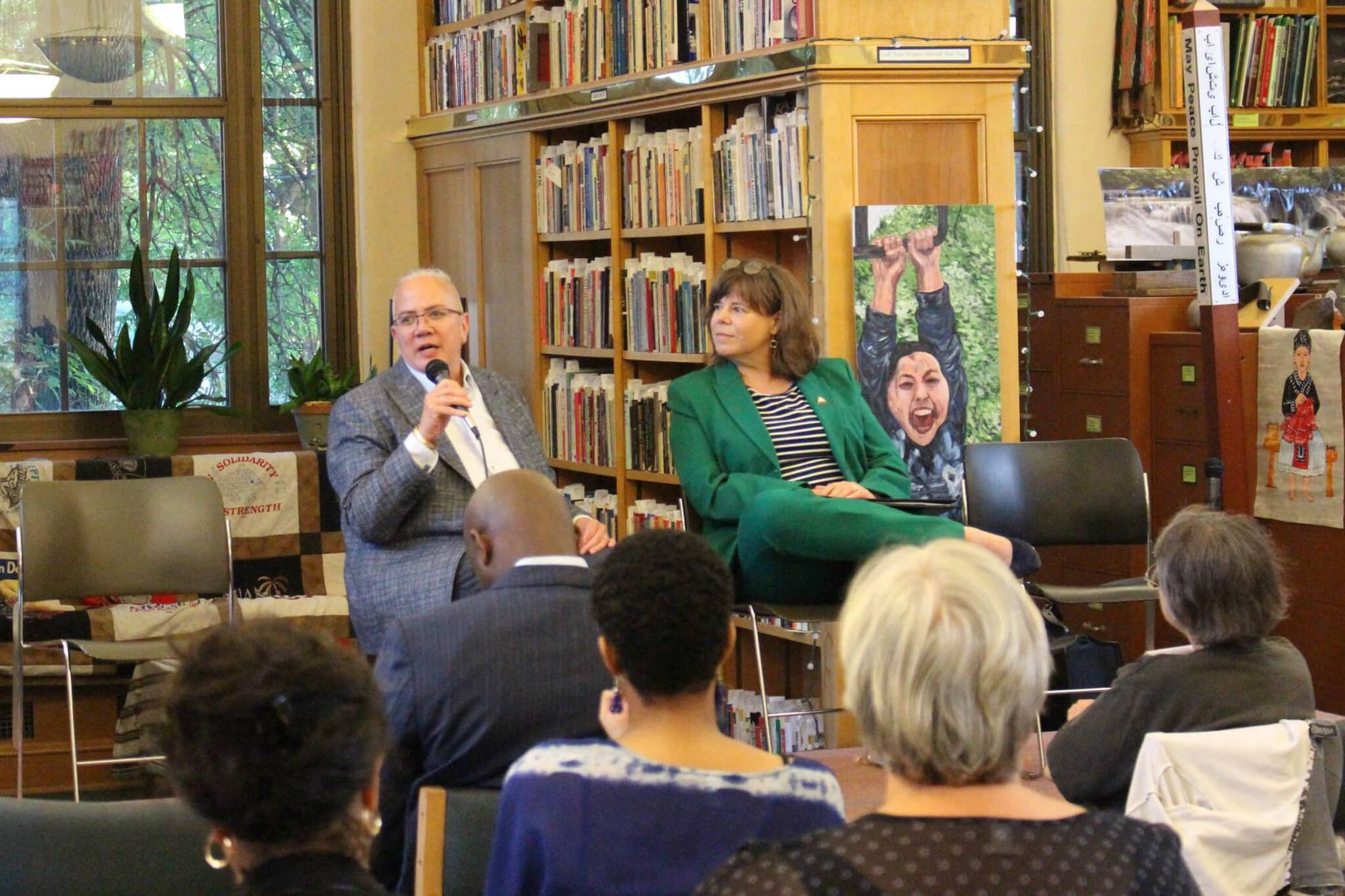
The series concluded with a conversation with Saint Paul’s Planning and Economic Development Department’s Deputy Director Kristin Guild and Minnesota Housing and Financing Agency Commissioner Jennifer Ho.
"There’s still more to say, and we should do something," Peter Rachleff, ESFL's co-founder said after the event.
It was also clear that the community wanted to turn conversation into action. So, the coalition of housing organizations along with a number of filmmakers from TPT met as a team to come up with the next step. The result? The creation of the East Side’s first Housing Summit, held on November 12, 2019 at ESFL.
Nearly 600 people attended the summer event series and Summit, and shared their own stories, aspirations, concerns and hopes around housing issues.
The East Side's First Housing Summit
“How did we get here? It has been an interesting and fascinating journey,” Thomas said, addressing a packed house at the Housing Summit. “We’re here and we’re rooted in community.
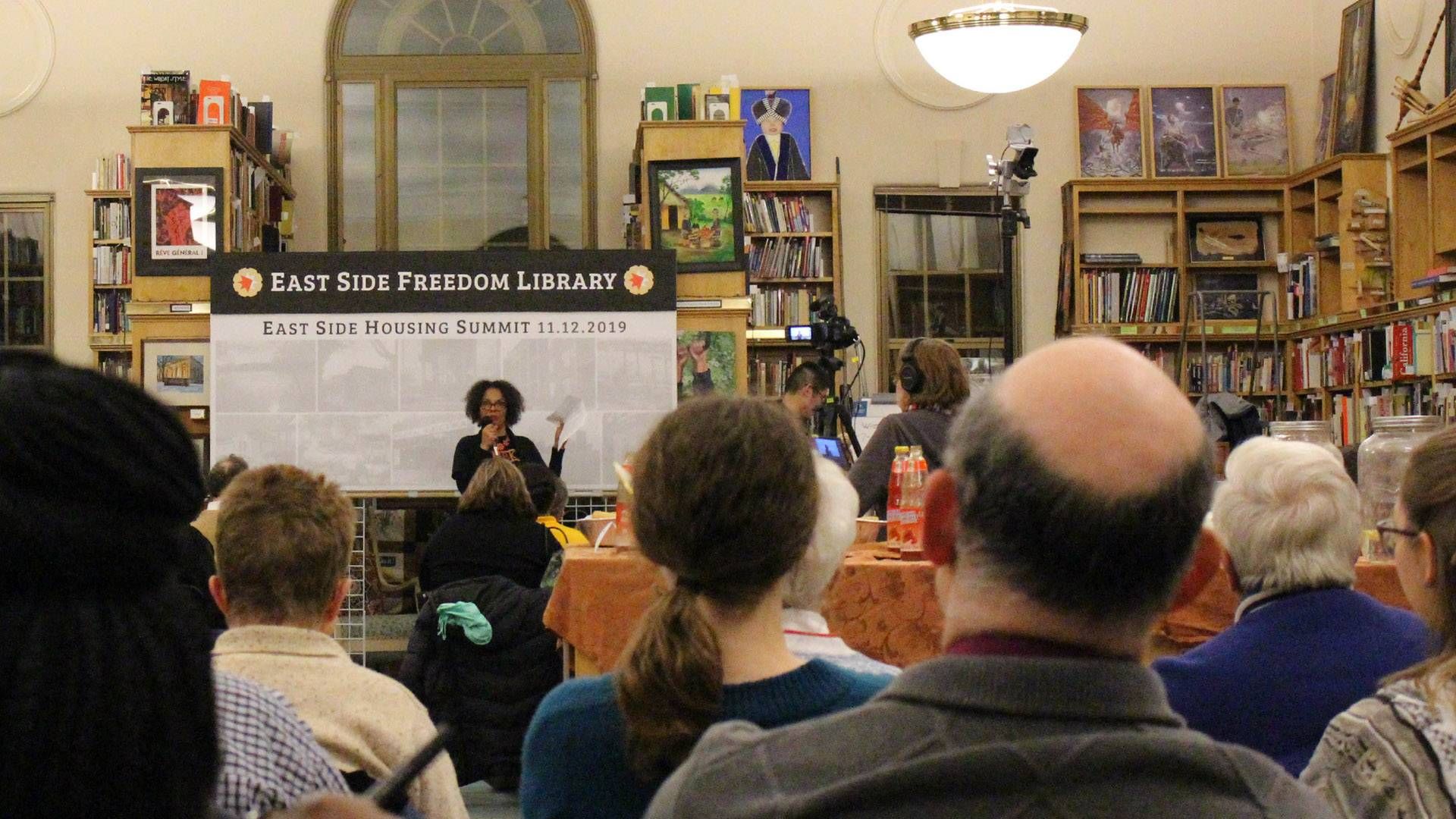
The Summit was designed to focus on key issues identified by the community at the summer series: racial disparities, homeownership, renters and homelessness. All in all, the Summit revolved around two main areas of focus:
- The first was to tell stories. TPT documented and collected community stories about housing through video testimonials and art pieces in order to raise awareness of housing issues on the East Side.
- The second focus was to create some working language around needs and goals after discussing current events on the East Side.
The Summit was streamed live via Facebook, and you can watch part 1 and part 2.
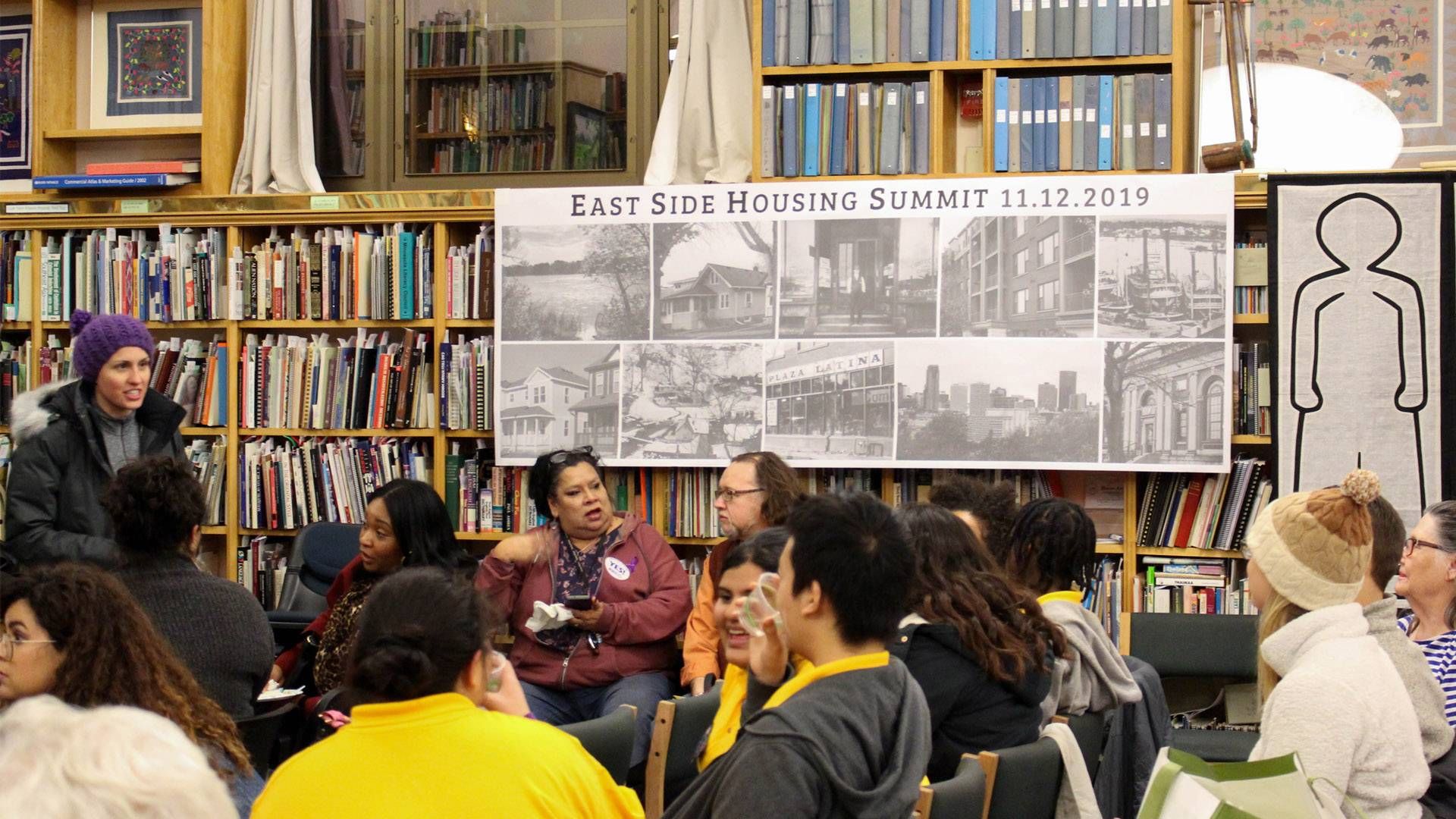
Some context for the housing disparities we see today
Before diving into conversations about changing the narrative about housing on the East Side, the Summit began with some historical context to help frame how we got to where we are today.
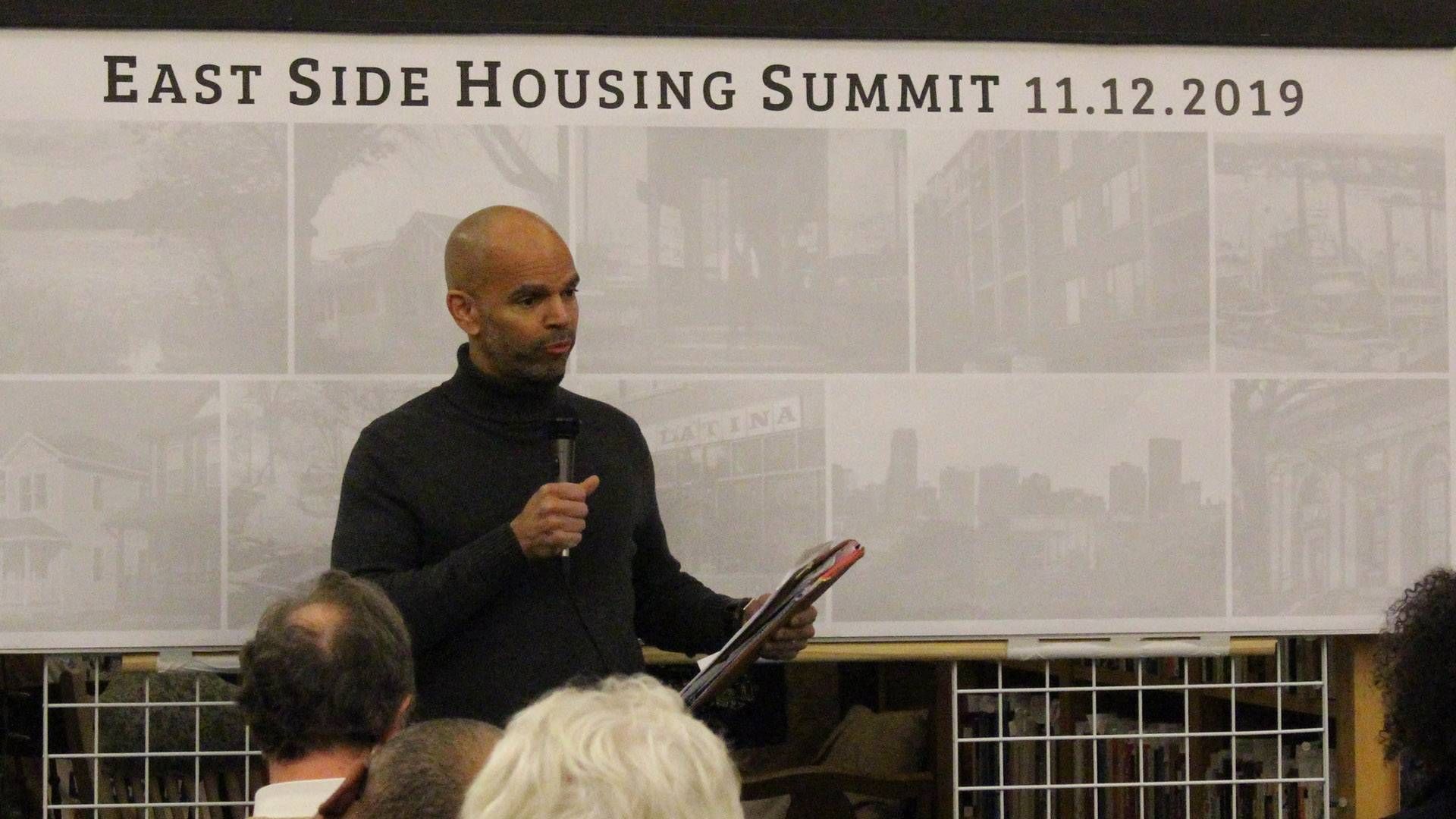
TPT Producer, Daniel Bergin, talked about stolen Dakota land and the historic, systemic racism that has shaped our state. He talked about making his film Jim Crow of the North, which closely examines the racially restrictive covenants and redlining that created the deep divide in equity around housing that we still experience in the Twin Cities today.
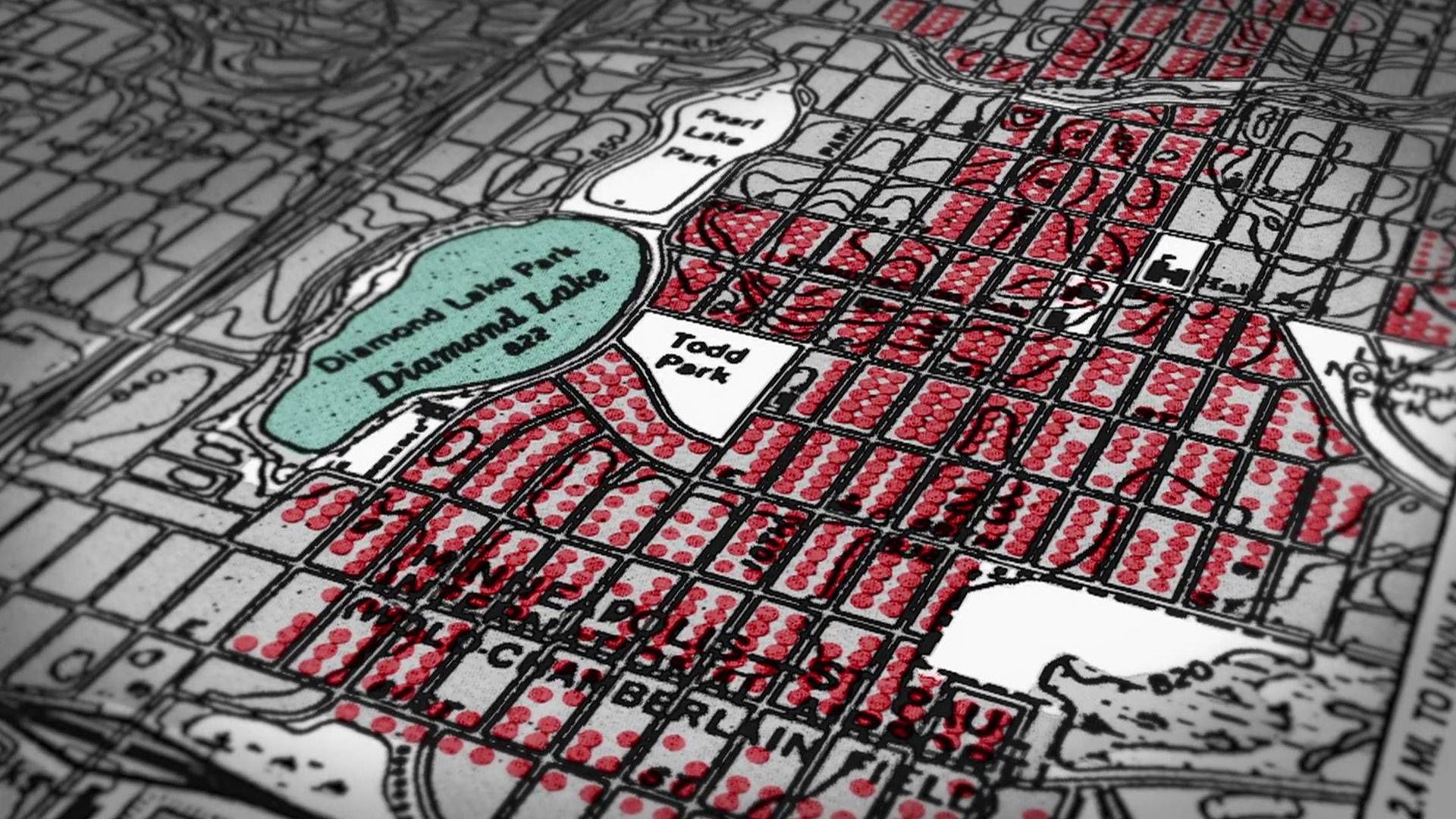
“The housing disparities are the worst in the nation here in the Twin Cities. This narrative of how we got to now is something we explore in Jim Crow of the North, and it’s a tough history. What you’re doing with this kind of work and engagement... [is to be] armed with that knowledge. How can we find some equity going forward?” Bergin said.
“The challenges are real and the intersectionality of this oppression is real. I am encouraged and heartened by this engagement that can lead to real change," he added. "It’s small local discussions like this that really tip the knowledge of this history into action."
Whose voices are in the room? And whose voices are not?
The Summit was designed to amplify the voices of community and ask them to co-create some language to help push forward housing action on the East Side. So, it was an important moment during the evening to pause and to identify whose voices were in the room and whose were not.
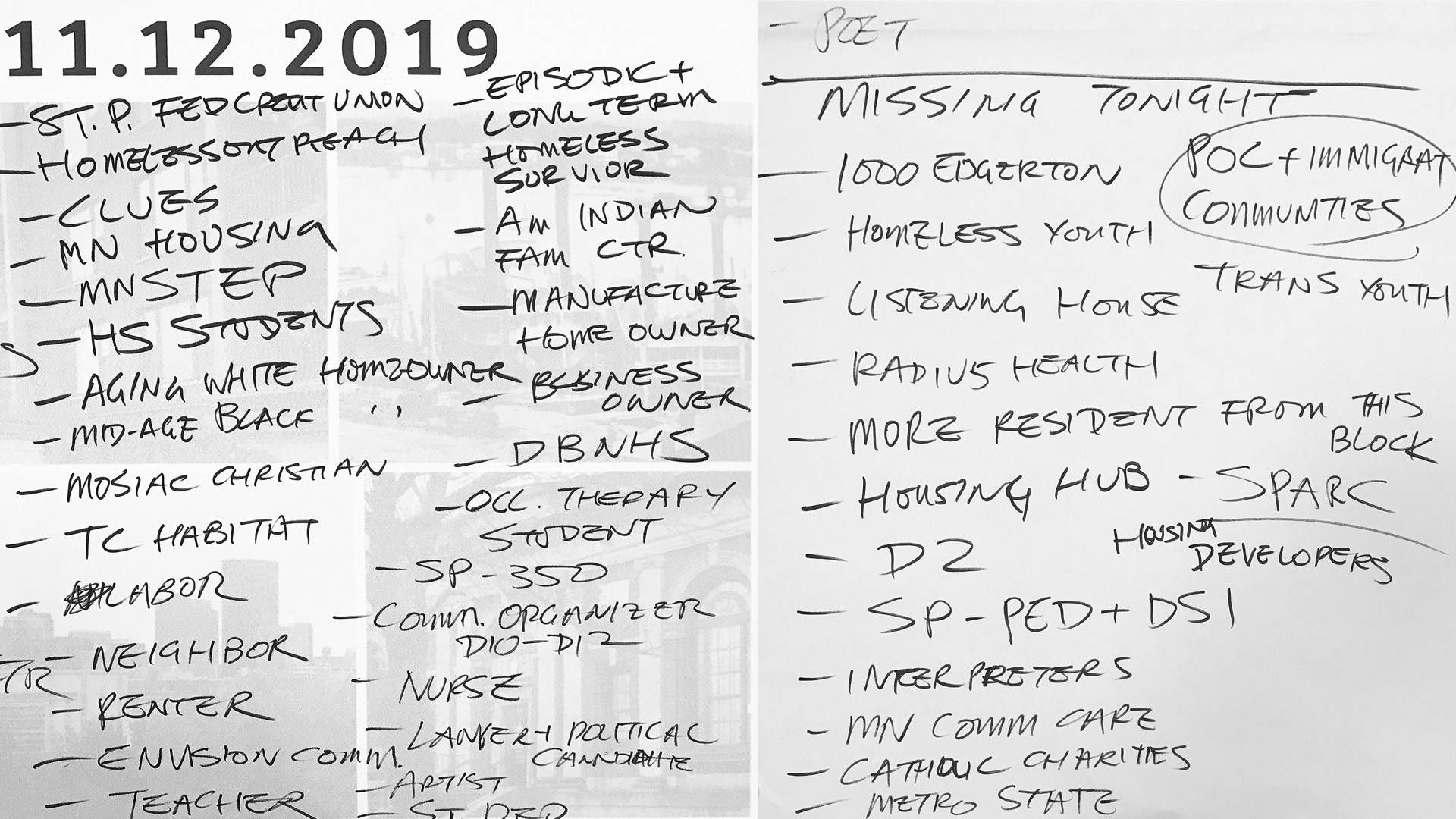
The room was filled with a diverse mix of attendees who self-identified as realtors, landlords, activists, faith group members, city council members, homeowners, renters, state representatives, homeless, teachers, students, seniors, poets… and more. Those not in the room included members of some immigrant communities, homeless and trans youth and representatives from certain housing organizations.
"It is critical that our voices are heard. We can’t wait for someone to save us. We need to save ourselves. We need to be part of the solution and not the problem to this housing issue today," Thomas said.
TPT attended the event to document and collect community stories about housing in an effort to create a number of engaging media and art pieces aimed at raising awareness of the issues around housing on the East Side. KMOJ producer Laurie Stern was also in attendance to capture voices and stories for an audio documentary series on affordable housing.
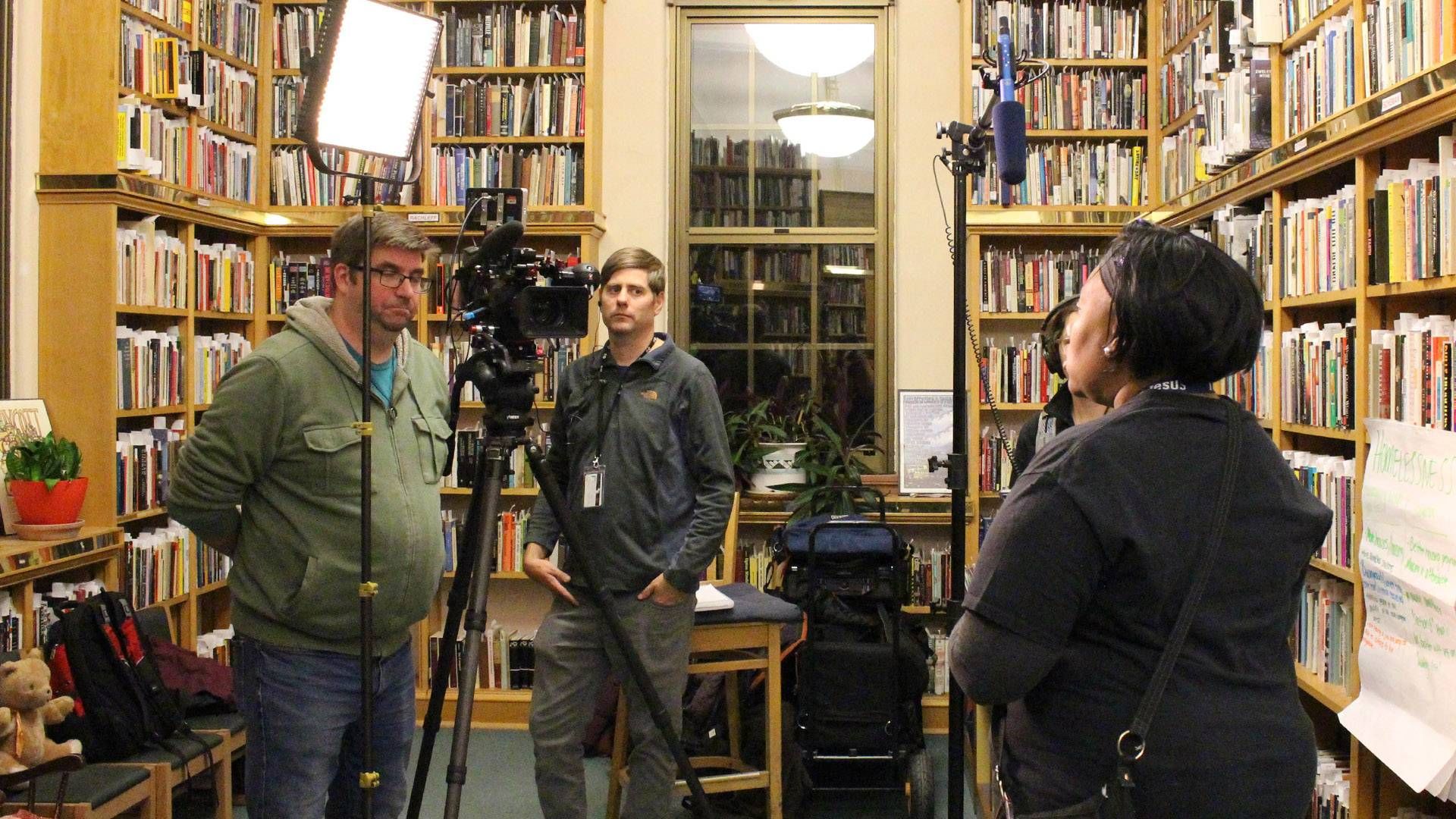
Attendees were also asked to share comments and drawings about their hopes for changing the narrative around housing:
More housing, better housing
Drugs and alcohol aren’t the gateways to homelessness. TRAUMA is.
Closing the racial housing gap can’t start until we start the convo
Starting the conversation is making progress
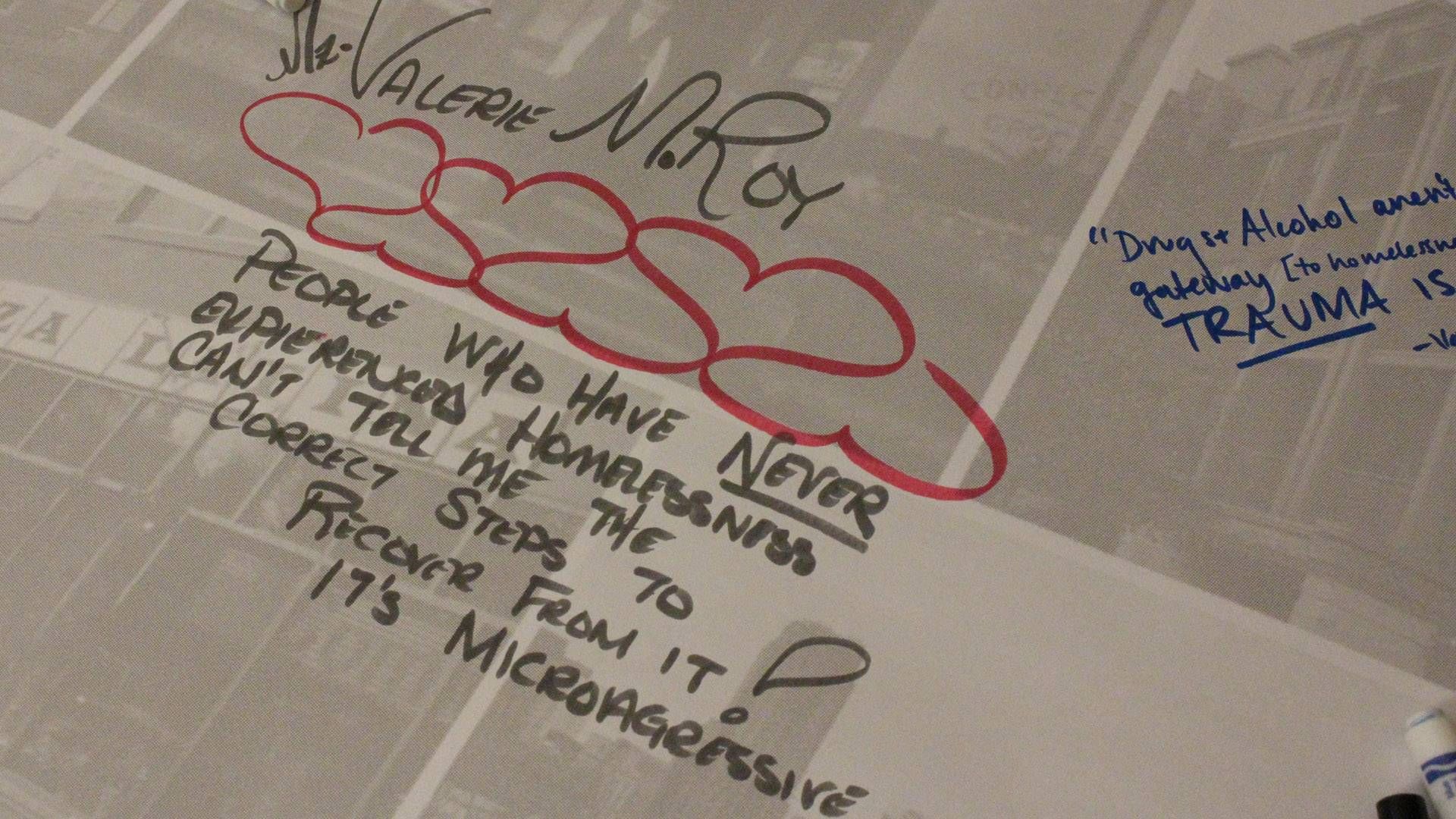
Action Through Art
Leon Wang, owner of Firebird Design Lab, led an engaging art exercise designed to foster conversation, participation and action. He asked attendees to break into three small groups and work collaboratively to explore a key community issue: home ownership, homelessness and rental issues.
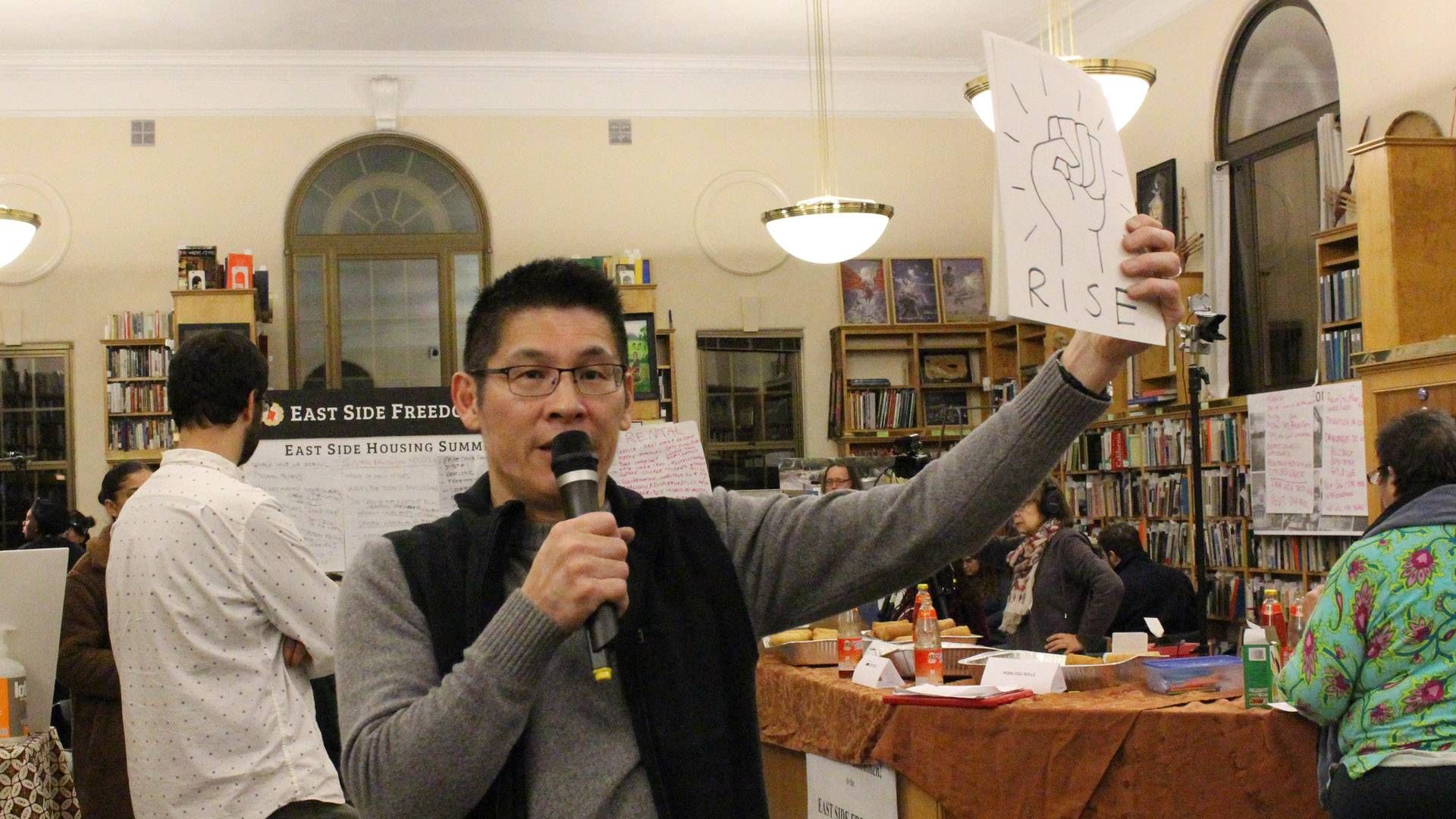
Each group conversation was led by a facilitator with expertise on that topic. After the discussion, each person in the group was asked to draw four images that represented the ideas that stood out to them and spoke to them. Then, each group was asked to collaborate and generate one iconic image to illustrate a key message the group wanted to amplify.
RENTAL Insights
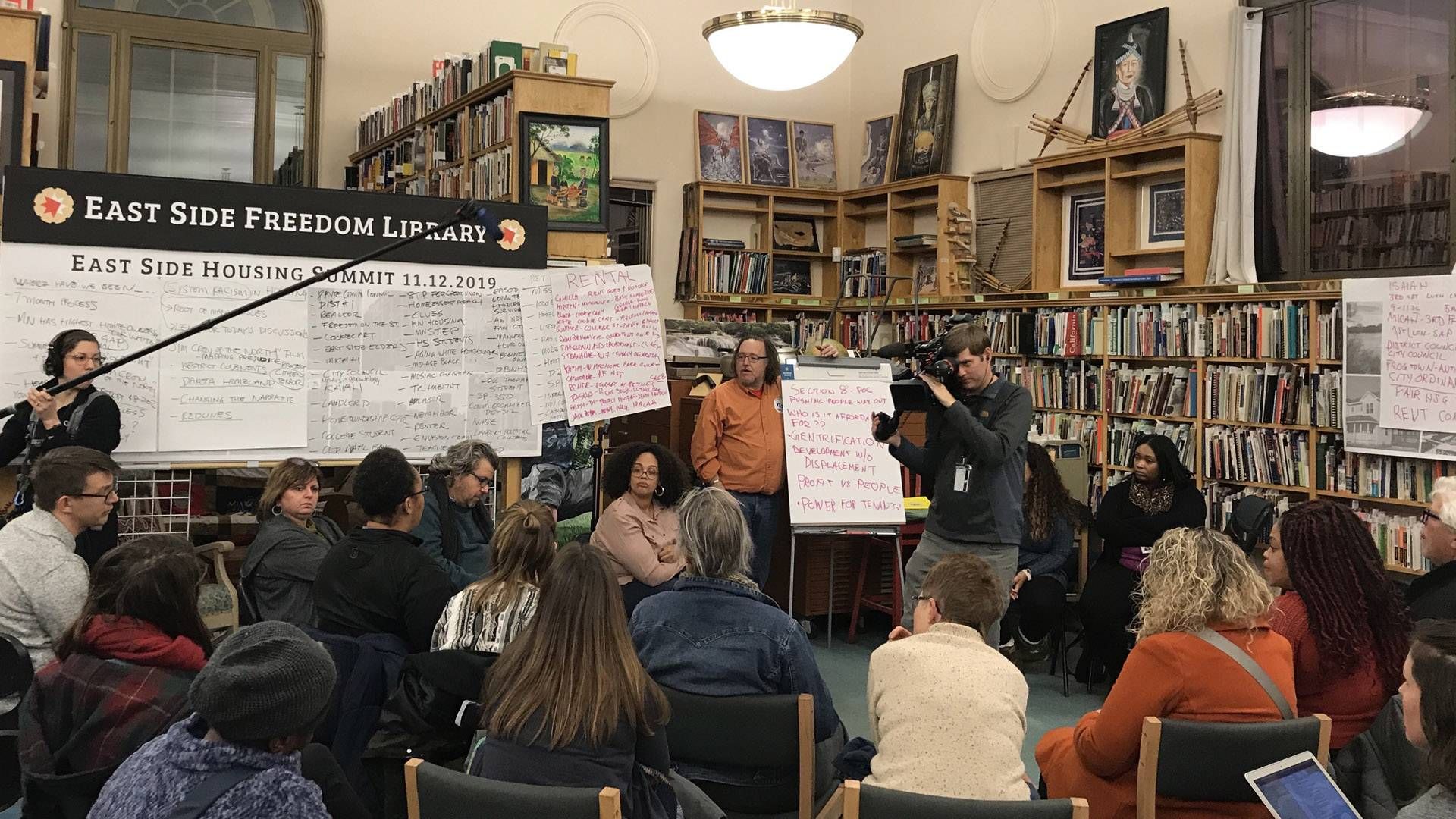
“Everyone should be able to have the right to rent.”
De-commodify housing and land to build community and stability.
Money drives everything.
We talked about development without displacement.
We need to make sure tenants have power and protections.
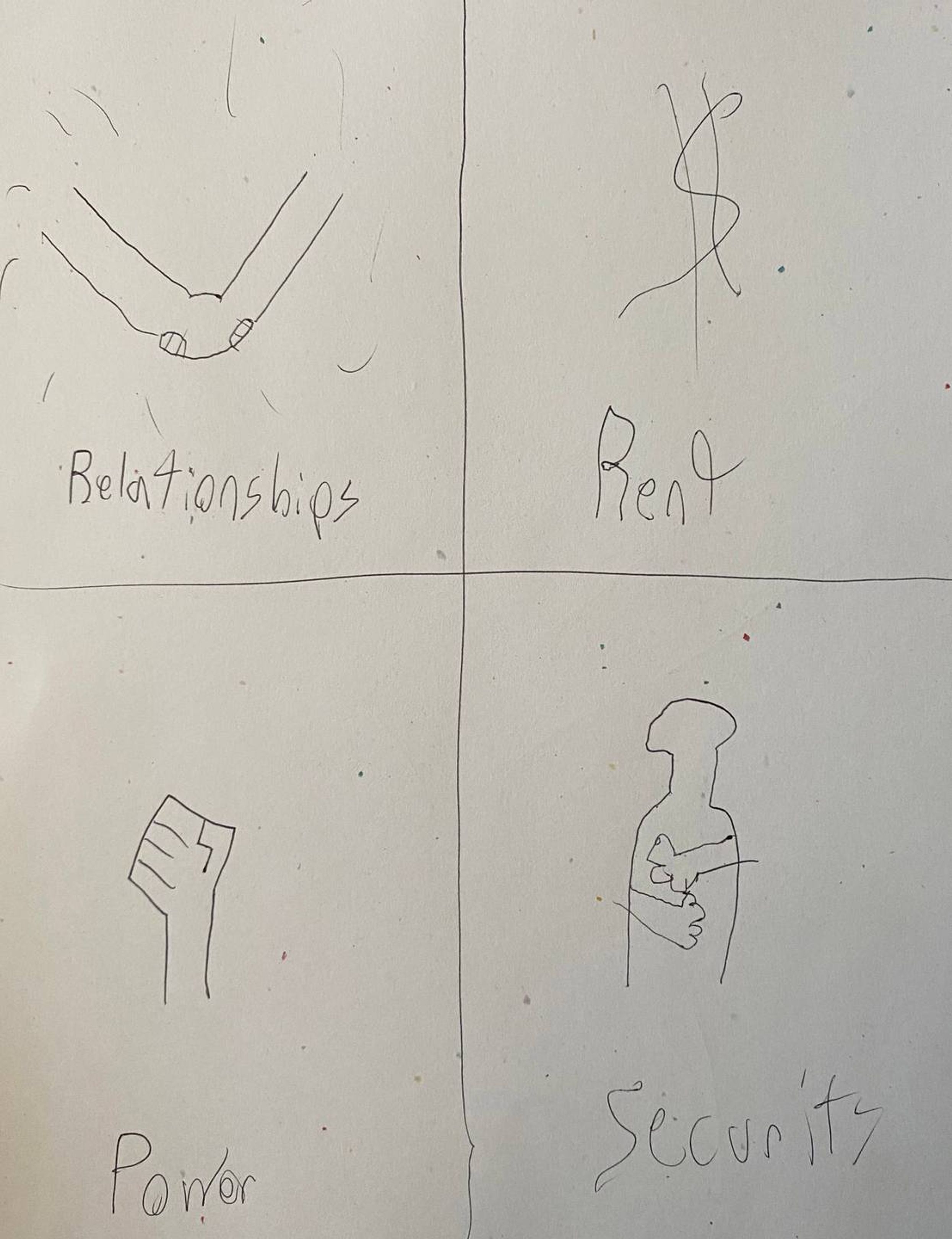
HOMEOWNERSHIP Insights
"With rising cost of rent and home prices, if nothing changes, we’re on a trajectory that only people with means will have access to quality housing."
Importance of having knowledge throughout process of homeownership rooted in community.
Not only having trusted advisors to help you prepare to buy a home, but to stay in your home and then convey that to your children; create a cycle that generates wealth through homeownership.
Housing costs and wages don’t align.
Seniors can’t afford to leave their homes.
HOMELESSNESS Insights
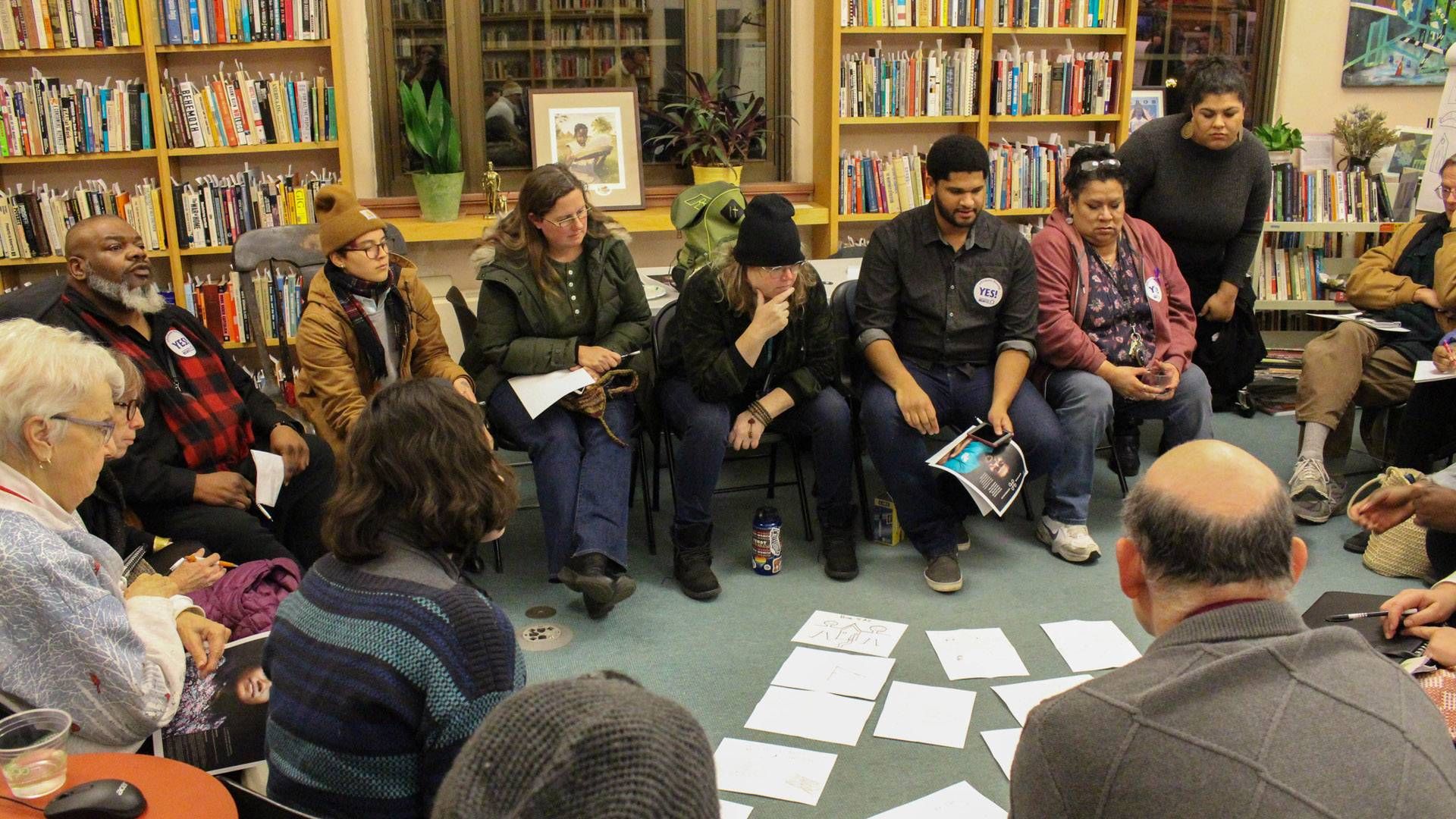
"A lot of homeless people feel invisible and treated as if they are invisible. People here finding solutions is humbling; people coming to this tonight means a lot.”
Don’t tell me how to recover if you haven’t asked for my input.
Housing is a human right.
People who are homeless in our community are residents.
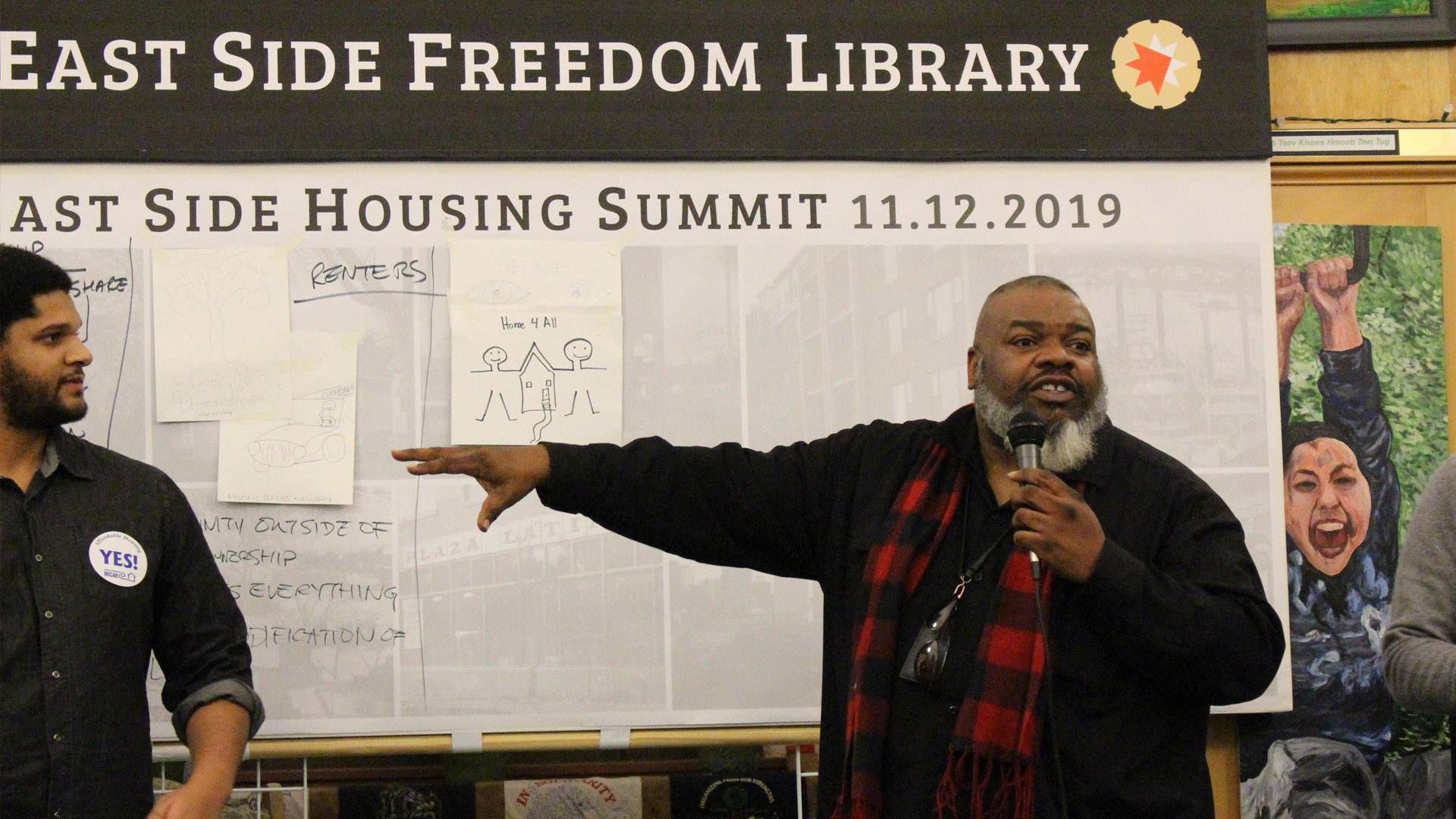
I tell people, the system moves slowly.
Cycle of homelessness happens again and again.
Nearly 2,000 kids in SPPS experience homelessness.
Homelessness is so nuanced and so many moving parts. I’m so grateful for the engagement I saw tonight. It’s really amazing to see everyone coming together.
Seeing Home 4 All:
The images represent hands outstretched to symbolize
togetherness and stabilization of family.
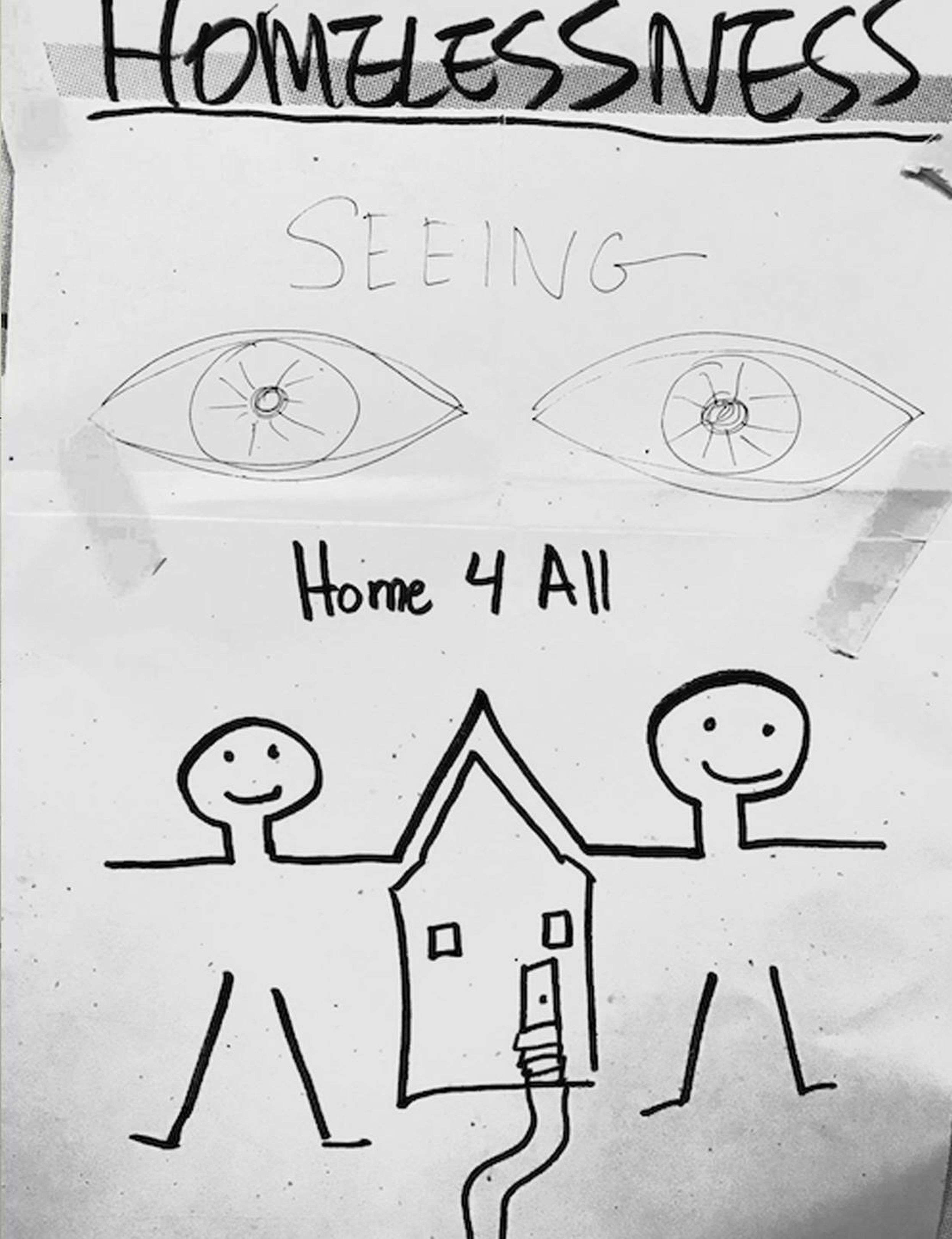
Address trauma first before addressing alcohol and drugs.
More communication needed about those who experience homelessness.
Help those who work with homeless have deeper understanding.
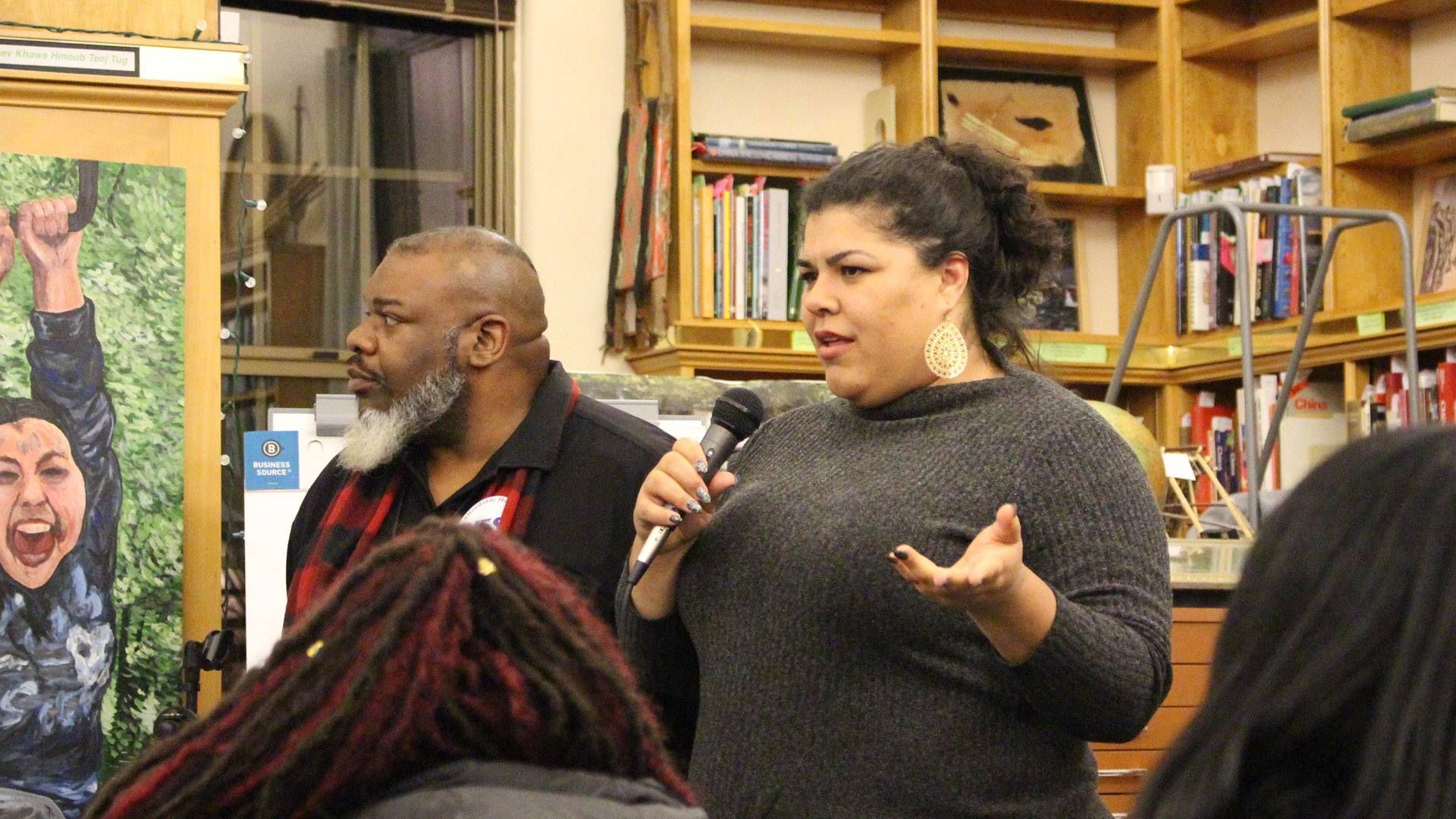
“Housing really is a right and it is something everybody needs to have. Look, what good is any other right we have if you’re going to freeze to death? Because we live in Minnesota. The right to free speech is meaningless if we don’t have housing," shared Athena Hollins, Diversity and Inclusion Director at Minnesota State Bar Association. "My drawing, A Home 4 All, if we work together we can create something like that. It's difficult and not easy, but we have to strive for it because it’s a basic human right.”
Final Art Images from the Homeownership, Renters and Homelessness groups:

Movement Forward
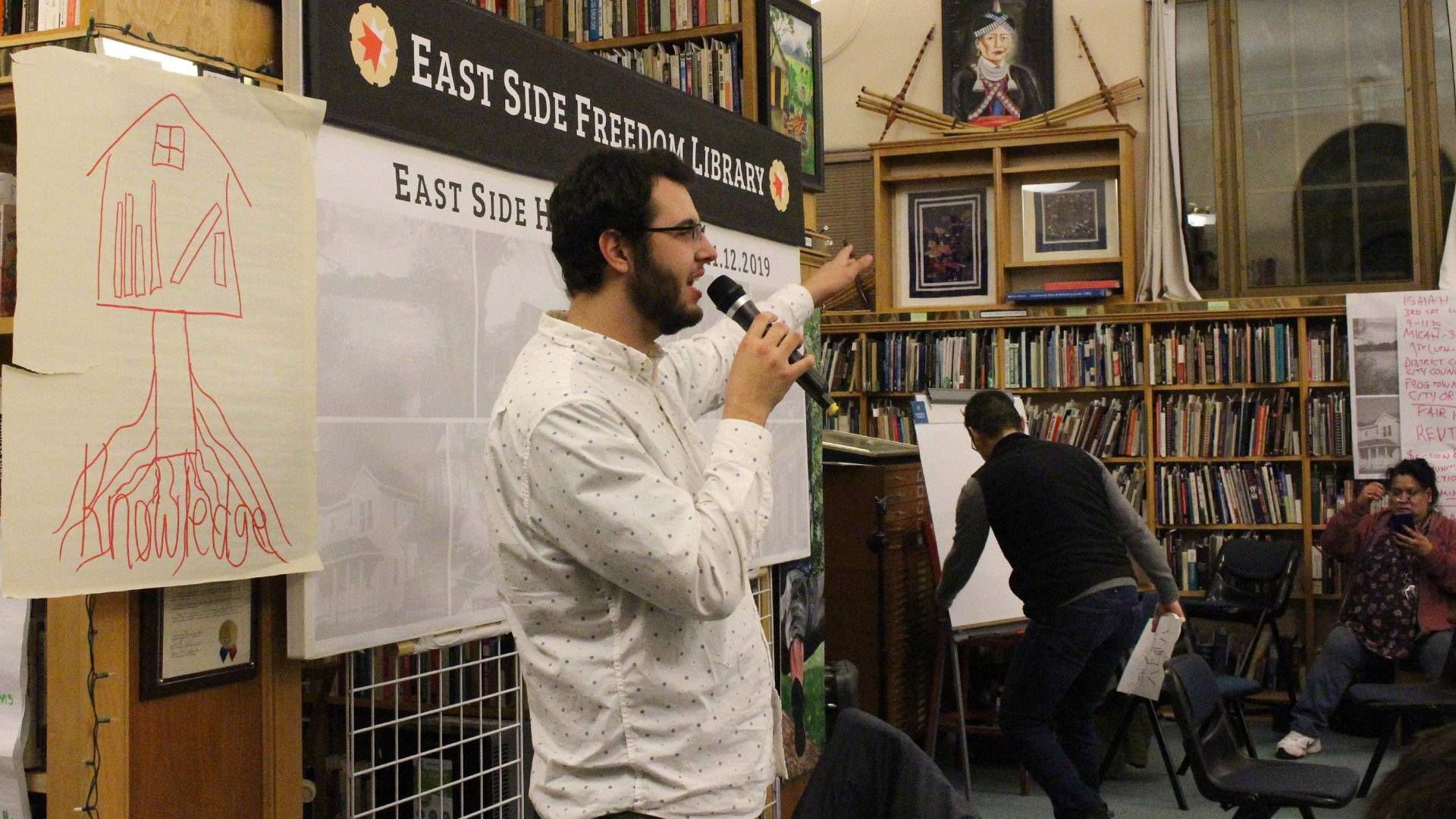
Some exciting developments happened after the Summit:
A Housing Summit Report (.pdf) was created that summarizes all of the different voices that were heard and the key themes that resonated. The report was shared with community members and leaders following the Summit.
A working group of East Siders was established to lead the way going forward.
In early January 2020, more than 30 leaders working in housing across the metro area helped to determine best practices for the newly formed East Side Housing Justice Group.

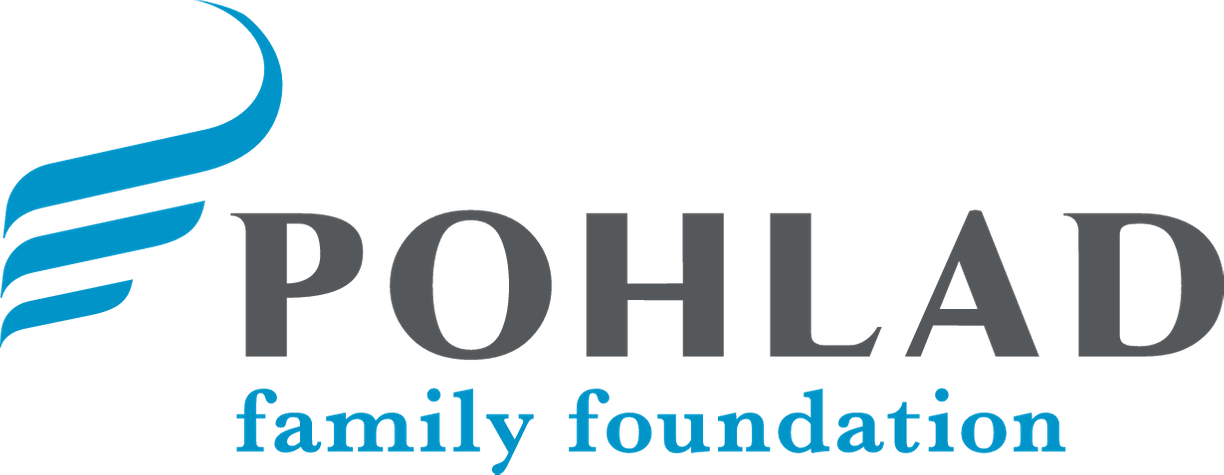
This story is part of the collection, Under One Roof: Stories on Minnesota’s Housing Crisis, which is funded by a grant from the Pohlad Family Foundation.
Get a visual look at Minnesota's housing crisis - as well as some solutions could help.
Can tiny homes help to curb Minnesota’s issues with homelessness? One local organization is experimenting with the small homes, an effort that has proved successful in other parts of the country. And one local church is working up plans to house homeless veterans on its property.
More than 10,000 Minnesotans are homeless, a number that is a record-high for the state and a 10-percent increase since 2015 – but the problem doesn’t just persist in the Twin Cities. One Greater Minnesota reporter Kaomi Goetz explored how homelessness is also impacting rural communities across the state.
“Get a job!” “Go to a shelter!” So many misconceptions swirl around the issue of homelessness in Minnesota, many of them driven by persistent stereotypes. Explore five of the most prevalent – and false – notions about what it means to be homeless in our state.
